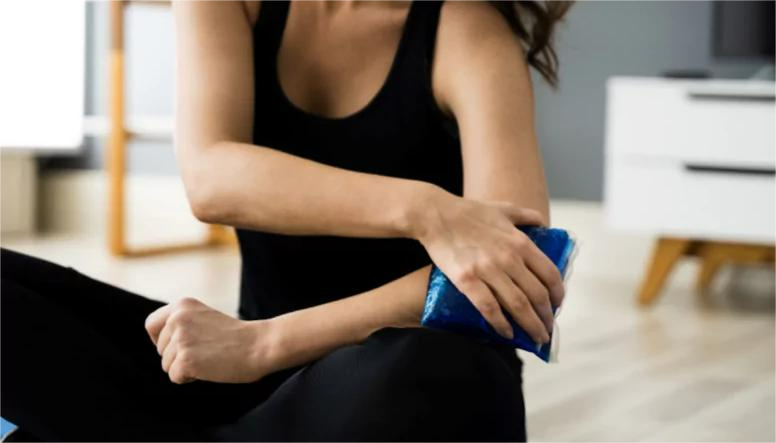Cold therapy is a time-tested method for relieving pain, reducing swelling, and aiding recovery from injuries—but using reusable cold compresses incorrectly can do more harm than good. Whether you’re treating a sprained ankle, post-workout soreness, or chronic joint pain, understanding the dos and don’ts of cold therapy is key to safe, effective relief. As a leader in healthcare solutions, INTCO Medical delivers high-quality reusable cold compresses designed for both medical and everyday use, ensuring patients and consumers alike can benefit from reliable, user-friendly physical therapy tools.
How Long Should You Use a Reusable Cold Compress? The 20-Minute Rule
Medical authorities like the Mayo Clinic and the American Academy of Orthopaedic Surgeons (AAOS) emphasize the “20-minute rule” for cold therapy: apply the compress for 15–20 minutes per session, wait at least 1–2 hours before reapplying, and never exceed 20 minutes continuously. This guideline exists to prevent frostbite, nerve damage, or rebound swelling—risks that increase with prolonged cold exposure.
The recommended duration varies slightly by condition. For acute injuries like sprains or strains, 15–20 minutes every 1–2 hours (within the first 48 hours) is ideal, especially when combined with rest and elevation. Post-surgery swelling responds well to 15–20 minutes of cold therapy 3–4 times daily, though always follow your surgeon’s specific instructions. For chronic conditions such as arthritis or tendinitis, shorter sessions of 10–15 minutes, 2–3 times a day, are safer to avoid over-irritating sensitive tissues. Even post-workout muscle soreness or headaches benefit most from 15 minutes of targeted cold application, with best results when used within 24–48 hours of the discomfort starting.
Why Timing Matters: Risks of Prolonged Cold Exposure
Prolonged use of a cold compress can trigger unintended consequences. Frostbite, characterized by white or numb skin, occurs when tissues freeze—particularly dangerous for those with poor circulation. Nerve irritation, marked by tingling or sharp pain, is another risk, as cold can disrupt nerve signalling if applied too long. Additionally, blood vessels may overcompensate after extended constriction, leading to rebound swelling that worsens inflammation. These risks underscore why adhering to the 20-minute rule is critical, even when relief feels incomplete.

Dos and Don’ts for Safe, Effective Cold Therapy
To maximize benefits while minimizing risks, follow these best practices:
- Use a barrier: Wrap the cold compress in a thin towel or cloth to protect skin from direct contact—this simple step prevents frostbite, as recommended by the Cleveland Clinic.
- Elevate the area: Combining cold therapy with elevation (e.g., propping up a swollen ankle) enhances swelling reduction by reducing blood flow to the injured site.
- Monitor skin condition: Check the treated area every 5 minutes. If skin turns white, red, or feels numb, remove the compress immediately.
- Set a timer: Avoid losing track of time—use a phone or kitchen timer to enforce the 20-minute limit.
- Store properly: Keep reusable gel packs in the freezer, but avoid extreme freezing that can make them stiff or less flexible. INTCO’s cold compresses are designed to maintain pliability even after freezing, ensuring comfortable application.
Don’ts:
- Apply directly to skin: Never place ice or a cold compress directly on bare skin—this increases frostbite risk.
- Use on open wounds: Cold therapy is only safe for intact skin; applying it to cuts or abrasions can delay healing.
- Sleep with the compress: Unconscious use often leads to prolonged exposure, raising the risk of tissue damage.
- Extend use beyond 48 hours post-injury: After the first two days, switch to heat therapy if swelling persists, as cold may no longer be effective.
- Reuse damaged packs: If a gel pack leaks, discard it immediately to avoid skin irritation from the contents.
When to Avoid Cold Therapy Altogether
Cold therapy isn’t suitable for everyone. Those with poor circulation (common in diabetes or Raynaud’s disease) should avoid it, as reduced blood flow increases frostbite risk. Individuals with numbness in the affected area may not notice early signs of tissue damage, making cold application dangerous. Hypersensitivity to colds or certain skin conditions like dermatitis also warrants caution. For chronic conditions, consult a healthcare provider before starting long-term cold therapy.
INTCO’s Commitment to Safe, Quality Physical Therapy Solutions
INTCO Medical extends its expertise in safe, reliable healthcare products to reusable cold compresses. Designed for both medical settings and home use, INTCO’s cold therapy solutions prioritize comfort, durability, and effectiveness—whether for post-surgery recovery, sports injuries, or daily pain management. By combining rigorous quality standards with user-friendly design, INTCO ensures that cold therapy remains an accessible, safe tool for anyone seeking relief.
Remember, when used correctly, reusable cold compresses are powerful allies in recovery. Stick to the 20-minute rule, monitor your skin, and choose trusted products like INTCO’s to make the most of cold therapy’s benefits. Always consult a healthcare provider for severe injuries or persistent pain—your safety and recovery depend on it.







